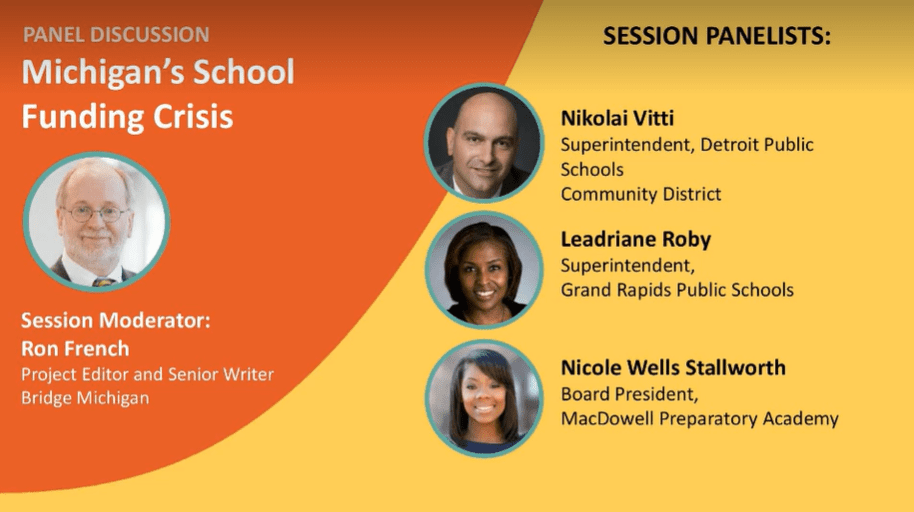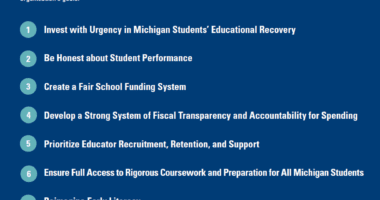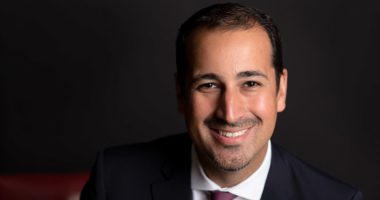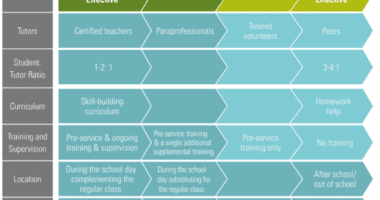School Leaders Discuss Challenges of Michigan’s School Funding Crisis during ED Summit 2021
Just days ago, the Education Trust-Midwest concluded its first annual summit under the theme, Building a Movement, Building Hope, bringing together leading teachers, principals, school district leaders, and state education policymakers to discuss the best practices that can help Michigan become a leading education state. The Summit also celebrated four first-ever “Building the Hope” schools in Michigan that have consistently demonstrated exceptional academic progress and growth for underserved students.
While there are many educators across the state who share in this dream for an improved public educational system that serves the needs of all students — and work diligently toward it every day – there are systemic and policy challenges, including those related to Michigan’s school funding system, that impede transformation.
In one Ed Summit session that featured a presentation by ETM’s Chief of Staff, Mary Grech, and that was moderated by journalist Ron French of Bridge Michigan, school leaders from Detroit and Grand Rapids spoke directly to the state’s school funding crisis challenging their efforts to catapult all students to success.
Plainly, said Grech in an opening presentation to the session, “Money absolutely matters.”
National research has shown that increases in educational spending yields positive outcomes for students. It leads to improvements in overall educational attainment, higher wages, and reduced poverty in adulthood, most especially for students from low-income backgrounds, Grech said.
But where Michigan is concerned, the matter isn’t as simple as “increased educational spending” by lawmakers. It’s confronting and addressing the reality that Michigan has been among the worst states in the country for how it invests in its students, particularly students with greater needs.
For instance, from 1995-2015, Michigan had the lowest education revenue growth of all 50 states. Further, Michigan was one of only 16 states that had invested five percent less in high-poverty districts than in its low-poverty districts. This is despite the fact that the highest-poverty districts are serving students with additional needs that require more investment, Grech said.
The funding crisis is a daily reality for districts like Detroit Public Schools Community District and Grand Rapids Public Schools, where most students qualify for free or reduced lunch, as well as charter schools like MacDowell Preparatory Academy in Detroit.
“You end up asking districts like ours and others to run a system based not on the same amount of money, but less than other wealthier districts, [yet we must] give more to students that need more, but with less. That doesn’t even make sense,” said DPSCD superintendent Nikolai Vitti, “and that’s how we disenfranchise students that are coming to us in harder-to-serve zip codes.”
Dr. Leadriane Roby, superintendent of Grand Rapids Public Schools, spoke to the education challenges that inequitable funding has created in her district.
GRPS has faced perpetual staff shortages and loses top teachers to surrounding suburban districts as they’re able to pay $15,000-$20,000 more per year than GRPS for the same positions, she said.
“The reality is that the lack of adequate and equitable funding has created an embedded systematic staffing shortage that has been constant for Grand Rapid Public Schools well before COVID hit,” Roby said.
This is especially true for specialized positions that primarily serve high-needs students. In addition, Roby said the district navigates infrastructure challenges caused by delayed maintenance on things like air conditioning, HVAC, playgrounds, entryways, and continued connections for resources. And in a district where a majority of buildings are 85 years old or older, with one school that is 150 years old, infrastructure upgrades are costly, Roby said.
Even with the infusion of stimulus dollars made available to districts amid the pandemic, structural changes to Michigan’s school funding system are still necessary because funds are temporary and must be spent within the next two to three years, the school leaders said. And the one-time dollars are not enough to tackle decades-long inequities, the school leaders said.
“You can’t address long-term, reoccurring needs with one-time money,” said Vitti.
With ESSER (Elementary and Secondary School Emergency Relief) funds thus far, DPSCD has allotted $700 million to infrastructure improvements, conducted home visits to help families navigate the return to school, supplied students with up-to-date laptops with internet access, expanded summer school for athletics and fine and performing arts, stationed a nurse in every single district school, expanded school mental health services, reduced class sizes and continues to offer weekly COVID testing, Vitti said. But when two years pass and the funding ends, so does the opportunity to maintain of all of DPSCD’s rapid improvements, he said.
“If we are ever going to be [serious] about equal opportunity, we have to get to at least equal funding –and then equitable funding — so that we can do the things we are doing now,” Vitti said.
Yet this isn’t a hopeless situation. Michigan can do something different, just as other states have. For instance, Michigan can work to better align state school funding with the needs of students.
Grech showed an example of what this action should look like from Massachusetts, a leading education state. There in 2019, policymakers passed a state funding overhaul that accounts for the greater needs of low-income students and will allot up to an additional $8,798 per student, as opposed to the additional $756 Michigan spent on low-income students in 2020.
In addition, states like Maryland and Georgia invest 85% and 159% more for English learners than Michigan, respectively.
Lawmakers can learn from these examples and act to alter Michigan’s state funding structure to specifically target greater resources to high need districts, ensuring the resources that additional funds provide actually reach the intended students — and end Michigan’s school funding crisis once and for all.
“This is a public policy issue,” said Nicole Wells-Stallworth, Board President at MacDowell Preparatory Academy. “It is in the hands of our state legislature to really ensure that we are fairly and equitably funding our K-12 systems… And investment in K-12 is also an investment in the economic future of our state.”






